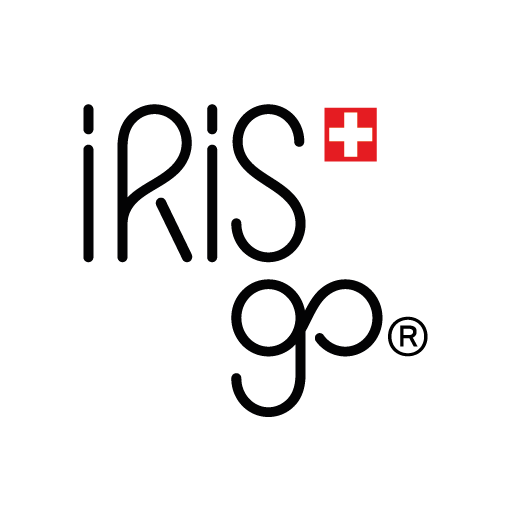"Reduce waste, safe taste". We are declaring war on the throwaway society! We founded IRISgo with this vision in mind. Sustainability has been very important to us since the beginning. That's why we decided that we wanted to be climate neutral right from the start. But what exactly does that mean?
As you probably already know, sustainability is a very multifaceted and complex topic. There are areas of action in almost every area of life in which we can be more sustainable. We make this easier for you with our products, because all of our products are climate-neutral. This means that the CO₂ emissions that arise during production and distribution are offset by compensation payments to climate protection projects via Climatepartner .
However, these payments are only part of our commitment, because our motto is: avoidance before reduction before compensation . This means that we first eliminate avoidable emissions . In the next step, we try to reduce our emissions wherever possible. We fully offset any emissions that remain at the end by supporting certified climate protection projects.
But that's not enough for us! We don't just want to offer climate-neutral products. We also want to be climate-neutral as a company. But how does that work?
We measure our CO 2 footprint
The first step was to find out where in our company and along the entire value chain what amount of CO₂ emissions are generated. To do this, we created a corporate and product carbon footprint in collaboration with Climatepartner. These footprints measure not only the emissions related to our product, but also all emissions from our site in Horw, Lucerne.
The corporate carbon footprint is divided into so-called scopes. There are three scopes. The following graphic shows the emissions behind these different scopes :

Image credit: WBCSD & WRI 2011
Scope 1 covers all of our direct CO₂ emissions. This includes, for example, the CO₂ produced by burning petrol in our company car. Fortunately, we don’t have any company cars and we don’t have any Scope 1 emissions . Scope 2 includes all indirect emissions, such as the CO₂ produced by heating our offices. All other emissions are assigned to Scope 3. This covers a very large area. This includes, among other things, the CO₂ produced by all employees travelling to work; the emissions generated by our suppliers for our products; and the emissions generated when we dispose of our office waste.
Reduce
We are doing everything we can to reduce our own direct emissions and also our indirect emissions step by step. Since a large part of the CO2 we produce is caused by our production partners, we are very dependent on our suppliers becoming more sustainable. For this reason , we always strive to make our products as resource -efficient as possible and to take all aspects of sustainability into account.
Compensate
According to Climatepatner's evaluation, in 2021 we caused the following direct and indirect emissions in Scopes 1-3 within the company and along the value chain:
Scope 1: No emissions
Scope 2: 2.77 tons of CO₂ -eq.
Scope 3: 19.29 tons of CO₂ -eq.
As already mentioned, there are certain emissions that we cannot avoid to date. What we can do, and are doing, is offset the emissions through climate protection projects. In 2021, we offset our emissions through the following two climate protection projects .
Clean Drinking Water, Sofala and Tete, Mozambique from 2021 - 2023
This drinking water project provides an additional 102,000 people in the provinces of Tete, Sofala and Manica in central Mozambique with access to clean drinking water by repairing and installing well systems. By providing clean water, water no longer needs to be treated on open fires in households. On the one hand, this reduces the CO₂ emissions that arise from (mostly) wood burning and, on the other hand, it can prevent cases of illness caused by indoor air pollution. This particularly benefits women and children, as they are most frequently exposed to smoke pollution. Together with local NGOs, the project identifies communities that need new wells or well repairs and ensures the water quality of the water obtained.
How does climate protection work with drinking water?
Two billion people in the world have no access to clean drinking water. For many families, the only way to make drinking water is to cook water over an open fire. The consequences are devastating: Depending on the region, ever larger areas are being cleared to produce firewood, and the burning of wood in turn produces CO 2 emissions. In addition to installing and repairing wells, water can also be treated chemically (for example with chlorine) or mechanically (with water filters). This can also reduce CO 2 emissions.
Forest Protection, Pará, Brazil from 2020 - 2021
The Ecomapuá project protects the forest on an area of over 97,000 hectares and prohibits commercial deforestation. Alternative sources of income are created for the local families, such as trading in the açaí fruit. This is not only popular in Brazil, but is also increasingly in demand as a superfood in industrialized countries. Because the project promotes development in one of the poorest regions in northeastern Brazil, it is certified with the Social Carbon Standard in addition to the Verified Carbon Standard .
How does climate protection work with forest protection?
Forests are among the planet's most important CO₂ stores, are home to enormous biodiversity and are the basis of life for all people. Depending on the project region, forests store different amounts of CO₂ per hectare. A particularly large amount of carbon is stored in the vegetation and soil of tropical swamp forests, primary rainforests or mangroves.
Global forest areas have declined sharply in recent decades due to increasing settlement, agricultural use, illegal deforestation and raw material extraction. The aim of forest protection projects is therefore to ensure that forests are preserved in the long term and that protecting the forest is more valuable than deforestation. Project participants work together with the local population to protect the area from negative influences. To this end, alternative sources of income and educational opportunities are created, among other things.

